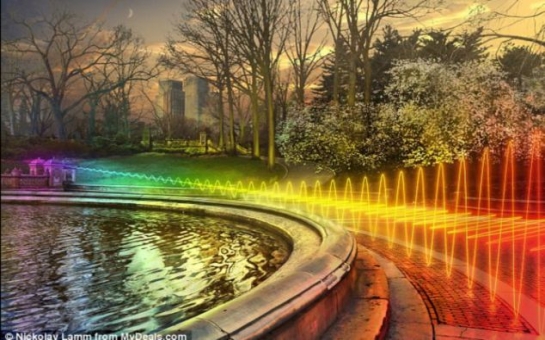Follow us !
How wifi could be killing your plants
Society
23:14 | 17.12.2013

How wifi could be killing your plants
A group of schoolgirls claims to have made a scientific breakthrough that shows wifi signals could damage your health – by experimenting with cress.In a twist on the traditional science project of growing cress on a paper plate, the 15-year-olds set out to test whether mobile phone signals could be harmful.They say the result could affect millions of people around the world.Pupil Lea Nielsen said: ‘We all thought we experienced concentration problems in school if we slept with our mobile phones at the bedside, and sometimes we also found it difficult sleeping.’ However, because they were not able to monitor their brain activity at their school in Denmark, they chose to monitor plants near wireless routers, which emit similar radio waves to mobile phones.When the girls grew trays of garden cress next to wifi routers, they found that most of the seedlings died. In the experiment, they placed six trays in a room without any equipment and another six trays in a room next to two routers.Over 12 days many of the seedlings in the wifi room turned brown and died, whereas those in the others room thrived. But critics claim that the cress seedlings left next to the routers probably struggled because they were dried out by heat emitted from the devices.Kim Horsevad, the students’ biology teacher at Hjallerup School, said: ‘This has sparked quite a lively debate in Denmark regarding the potential adverse health effects from mobile phones and wifi equipment.’ The results will bolster the findings of researchers in Holland, who found that trees exposed to wireless radio signals suffered from damaged bark and dying leaves.There is little evidence, however, that wireless emissions pose any danger to human health. Wifi signals use very low intensity radio waves – 100,000 times less powerful than a microwave.Sitting in a wifi hotspot for a year would only expose you to the same dose of radio waves as making a 20-minute mobile phone call.Wireless radio waves also diminish significantly with distance.Those who want to reduce their exposure to wifi emissions should sit more than 3ft away from their router and place their laptop on a table rather than on their lap.But there is some debate over whether the negative effects were due to the cress seeds drying from the heat emitted by the computer Wi-Fi routers used in the experiment.The study will raise fears that Wi-Fi radiation may also be having an effect on the human body and will lend weight to parents and teachers who have campaigned to stop wireless routers being installed in schools.Three years ago, research in Holland showed that trees that were planted in close proximity to a wireless router suffered from damaged bark and dying leaves.The Dutch scientists carried out their research on ash trees which had been suffering with bark bleeding and dying leaves.The city of Alphen aan den Rijn, in the West of the country, ordered the study five years ago after officials found unexplained abnormalities on trees which they did not believe had been caused by any known viral infection.The trees were exposed to six sources of radiation with frequencies ranging from 2412 to 2472 MHz and a power of 100 mW at a distance of just 20 inches.Trees placed closest to the Wi-Fi radio developed a ‘lead-like shine’ on their leaves that was caused by the dying of the upper and lower epidermis.This would eventually result in the death of parts of the leaves, the study found.In the Netherlands, about 70 per cent of all trees in urban areas show the same symptoms, compared with only 10 per cent five years ago, the study found. Trees in densely forested areas are not affected.But scientists have expressed scepticism about research such as this.At the time of the study, Marvin Ziskin, a professor of radiology and medical physics at Temple University in the U.S. said: 'Stuff like this has been around a long time . . . there's nothing new about Wi-Fi emissions. Scientifically there's no evidence to support that these signals are a cause for concern.’(dailymail.co.uk)ANN.Az










